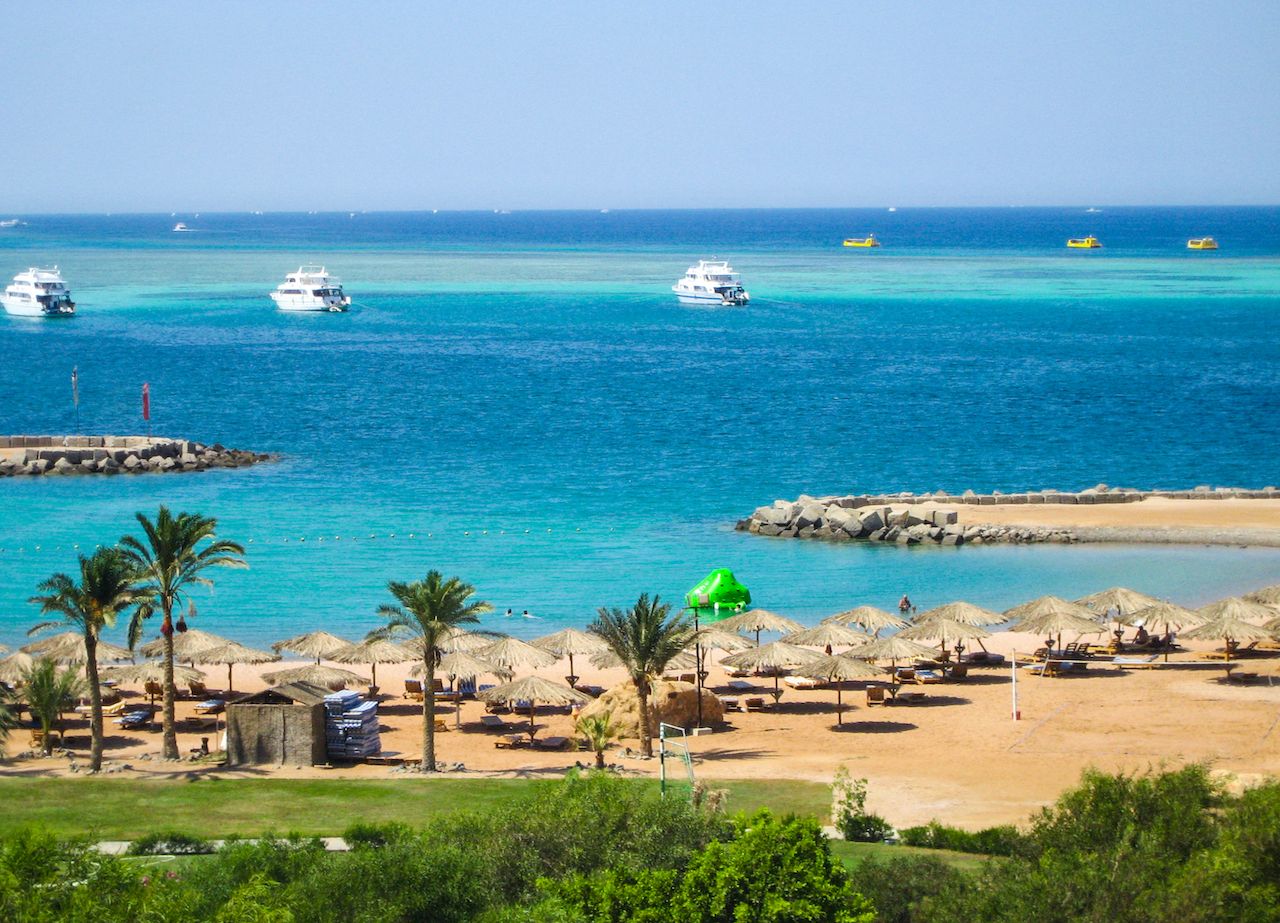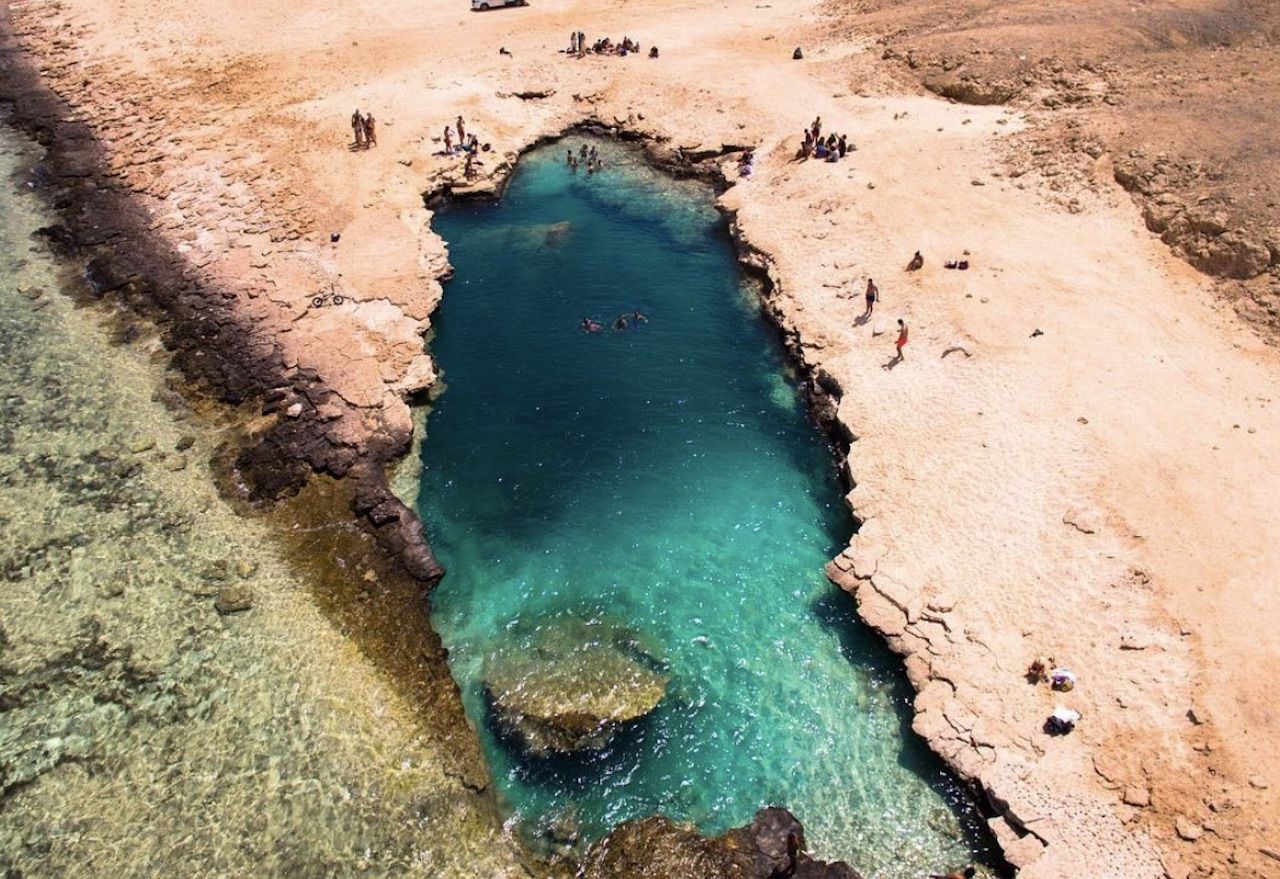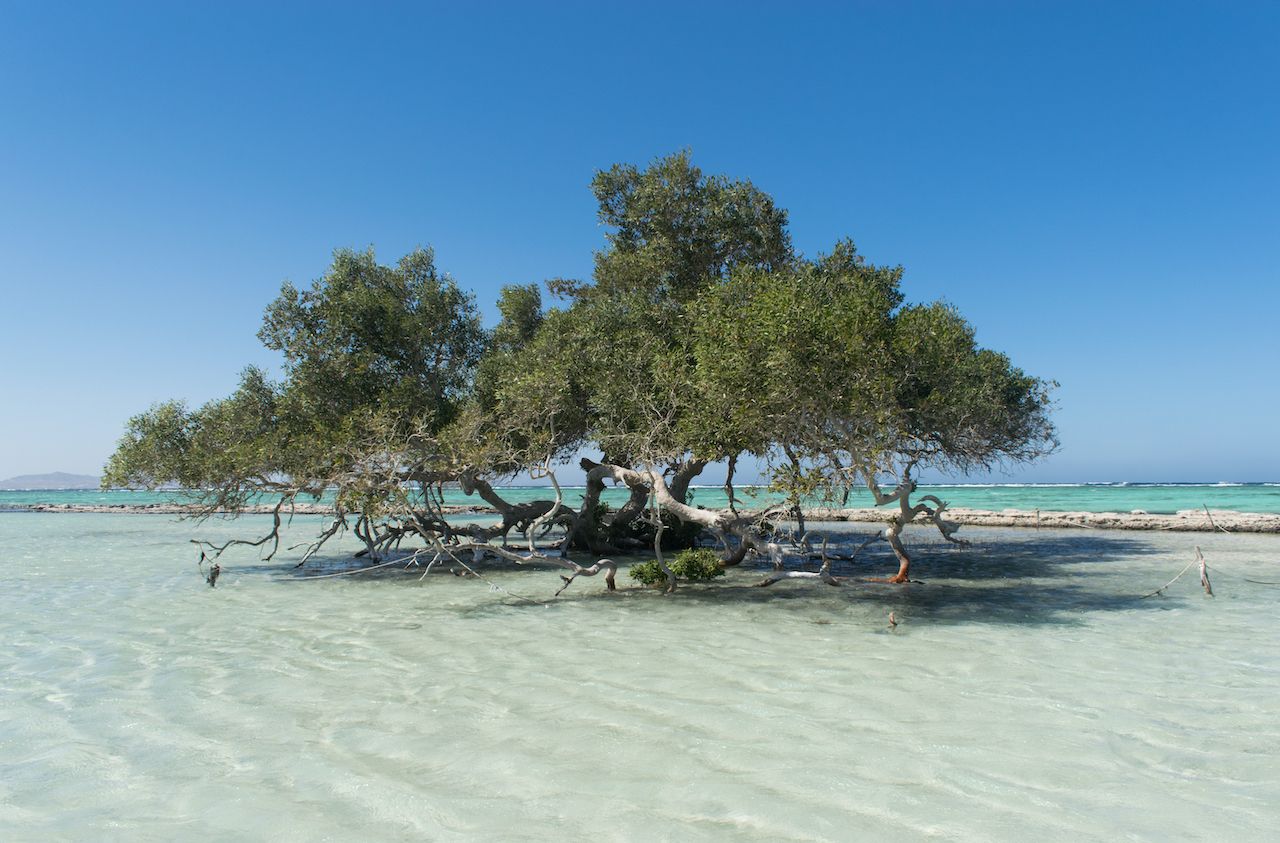The preferred destination of partygoers and spa enthusiasts, Sharm el-Sheikh near the tip of Egypt’s Sinai Peninsula is a beachy paradise filled with high-end resorts, bars, and restaurants. It certainly has its charms. However, if your goal is to appreciate the natural beauty of Egypt’s coasts in places that range from slightly to far off the beaten sand path, there are some very worthy alternatives, all of which are accessible from major cities by car.
Swim season never ends in Egypt, thanks to its warm climate. That being said, the water temperature on Egypt’s Mediterranean can be cool (in the low 60s Fahrenheit) in mid-winter. It’s best to avoid going during Ramadan as some businesses and restaurants have limited daytime hours, although the beaches are decidedly less crowded. Springtime is ideal for a visit — just note that Ramadan starts in April this year.





